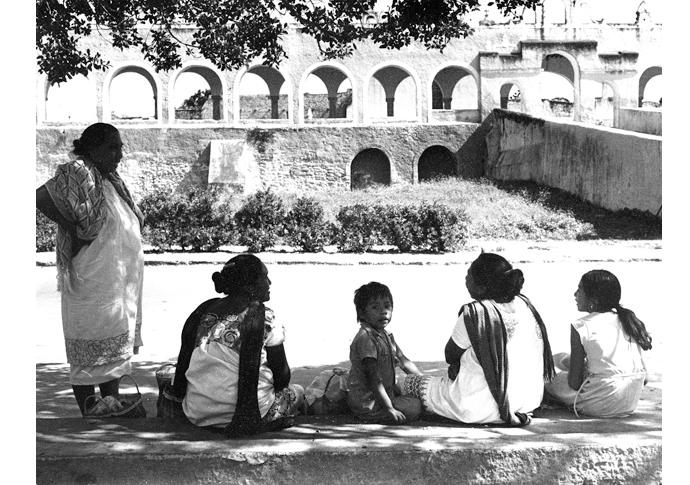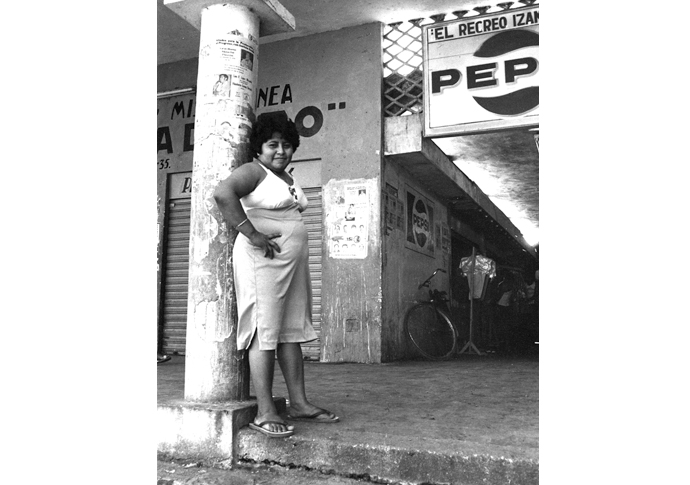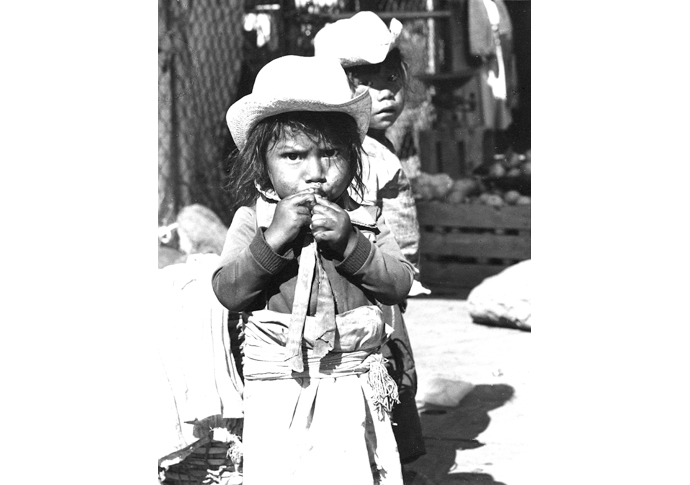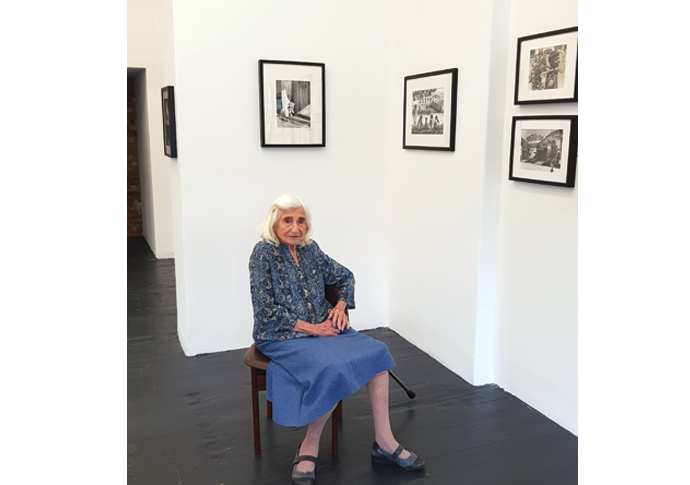Bohm voyage
Dan Carrier talks to photographer Dorothy Bohm, whose trips to Mexico form a new exhibition at the Somers Gallery
Thursday, 22nd September 2022 — By Dan Carrier

Dorothy Bohm’s images show her interest in the commonplace, the everyday lives of people
DOROTHY Bohm’s photographic archive stretches from the 1930s to the present day.
The celebrated photographer, 98, has a new show at the Somers Gallery in Somers Town – and it focuses on work completed during two trips to Mexico, taken 20 years apart.
In the mid-50s, her husband, scientist Louis Bohm, was working for the Shell oil company in New York. It gave Dorothy the chance to explore north and central America.
She travelled south to Texas to meet a relative who had also escaped the Holocaust and while there, Dorothy and Louis crossed the border and it gave her the chance to create a new portfolio with a focus on Mexico.
“I have an enormous body of work archived,” says Dorothy, looking back of over eight decades of work. It dates from her escape from Nazi Germany in the months before the war, and finding safety in Manchester, where she enrolled on a photography course.

“I was 16 when I began studying, and when I finished two years later, I worked as a portrait photographer.”
This gave her a solid grounding in camera use, photo framing and development. But her recognisable style and subject matter came to the fore when she took her camera outside.
In the late 1940s, she broadened her subject matter and her technical training in the studio stood her in good stead. She set her lens on capturing the daily lives of people through Europe – unfiltered, exploring the commonplace and everyday to celebrate the shared experience.
“Once I moved around, left the studio, it was much more exciting,” she recalls. “As you can see from my Mexican pictures, I really enjoyed it and the subjects really enjoyed having their photographs taken.”
The mid-50s trip was a landmark in her development as a photographer. For the first time, she started experimenting with colour.
“Mexico is a colourful country – but I still predominantly worked in black and white,” she says.
Colour was in its infancy. “It was very poor quality,” she says.
“I first started shooting in colour when I was passing through Hong Kong and it was then I realised I wanted to shoot some images in colour, and did so to a degree in Mexico. I had done all my own developing and printing in black and white, and there is big difference when it comes to developing in colour and how you shoot and then handle the prints.”
Mexico is one of 32 countries Dorothy chronicled through her lens. As well as Manchester and London, she lived in Paris and New York, travelling across Europe and further afield.
Her art was helped by the fact she did not need to work to a commission and could choose her own brief.

She had been the family bread winner while Louis completed his PhD, and by the time the first Mexican trip took place, Louis was earning a good living. It was an agreement they had made – she supported him, and he returned the favour. It meant Dorothy did not have to think of the commercial value of her shots, rather how beautiful, insightful and interesting she could make her work.
It gave her a freedom to roam with her camera. Work and travel formed the bedrock of her collections: when the Bohm family visited Italy each year for the summer holidays, Louis would return with their two daughters in time for the school term while Dorothy would stay on to work.
“It meant I could really look for subjects I found interesting,” she says.
“After earning money as a portrait photographer, I was so happy to be able to do it without the need to make money. I was able to have freedom with my photography and not think about having to sell them. It gave me an artistic freedom. I took photographs because I wanted to, not because I had to. It allowed me to do it for the love of it.”
In the early 1970s, Dorothy was a key figure in establishing The Photographers’ Gallery in Soho. It was through this project she met the esteemed Mexican photographer, Manuel Alvarez Bravo, and it was their friendship and influence that saw Dorothy and Louis return to Mexico.
“When we returned in the mid-70s, we hired a car and spent five weeks driving through the country,” she recalls.
“I had become acquainted with Bravo, and we travelled to see him and his work. When we became friends in London, it was his influence that led me to photograph Mexico. I knew what I was after. I wanted to talk to ordinary people and try and discover what the country was like. But he helped guide me what to look for, and where to find it.”
Looking back at her career exploring different cultures, she believes her curiosity was nurtured partly because of the experience of refugees fleeing the Nazis and how this impacted on her and her family.
“I had lost my birthplace because of Hitler,” she says. “It meant I felt able to photograph other people’s homes and birthplaces with more interest in many ways as I had lost my home.”
Picking her subject matter took time.
“The beauty of Mexico was the fact it was so different to anything we had experienced before,” she remembers.
Her care in choosing her subjects was partly formed by need. Dorothy recalls being discerning in her work because of the scarcity of equipment.

Dorothy Bohm
“Everything was still in short supply in the 1950s,” she says. “I was economical, having seen the vital materials for photography rationed for so long.”
The exhibition includes images from Mexico City, Wahaca and Yucatan including street scenes and landscapes. Dorothy’s favourite subject matter is predominant. Landscape shots were interesting to frame and shoot, but people, she says, had always been her forte.
“I have always wanted to show that people are good through my work,” she adds.
“I always sought to capture a moment in time on the lives of people, where ever it may be in the world. I sought to find the dignity and pathos of ordinary people.
“I did not have a particular manifesto for the trip, but I wanted to capture the essence of the place vividly, and the people I shot were the strongest example.”
• Dorothy Bohm: Mexico 1950s-1970s runs until October 1 at the Somers Gallery, 96 Chalton Street NW1 1HJ. Open Tuesday-Saturday, noon-6pm. https://somersgallery.com/